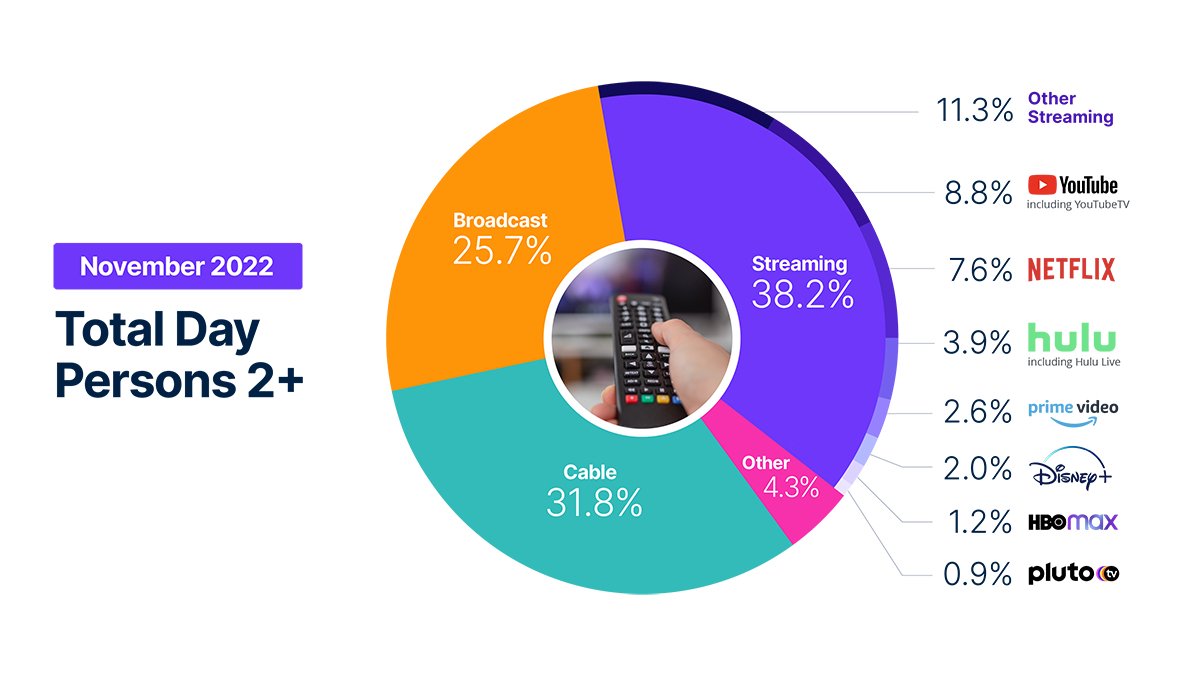Three Giant Honking Caveats About Nielsen’s Gauge Report
The November edition of Nielsen’s The Gauge report about TV viewership is out and it’s been getting a lot of buzz.
Unfortunately, that buzz often comes from a misreading of some of the stats, so here are some things to keep in mind when analyzing it.
1. YouTube is Number 1 beating out Netflix?
Maybe, but Big Honking Caveat #1 is that Nielsen’s YouTube stat includes YouTube TV, their 4MM+ subscriber vMVPD. Hence the higher-than-expected number.
It is an odd thing to add vMVPD viewership to a stat about the number of people streaming YouTube on TV, as those subscribers are not watching YouTube videos, but rather, the linear feeds from cable and broadcast networks like CBS, CNN and Comedy Central, just to name some of the C’s. This is true for #3 Hulu as well—their numbers also include Hulu Live TV.
It is unclear why Nielsen did this, as adding the vMVPD numbers is counterintuitive, since, as noted, those viewers are not watching Hulu or YouTube programming.
2. That means the Cable and Broadcast numbers are skewed.
Nielsen states that when counting :
Linear streaming (as defined by the aggregation of viewing to vMVPD/MVPD apps) are included in the streaming category and represented 5.8% of total television in November 2022. Broadcast and cable content viewed through these apps also credits to its respective category.
My reading of that (which Nielsen has confirmed) is that broadcast and cable viewing on vMVPDs gets counted twice, as it is included in both streaming and broadcast and cable. Attributing them to streaming does not seem to make much sense as in this case streaming is just a delivery mechanism for the broadcast and cable networks.
It’s a sizeable enough number now—5.8% of all television viewing is not nothing—but as the sunsetting of cable boxes continues, and more and more linear TV is delivered via streaming, Nielsen really need to pick a lane and stick with it.
3. More people watched streaming than broadcast OR cable. Not broadcast AND cable.
Together, broadcast and cable still make up 57.5% of all viewing to streaming's 38.2%. Remember too that while Nielsen breaks out "broadcast" and "cable", viewers don't - they are both primarily delivered via a set top box whose program guide does not break out “broadcast” from “cable.” In fact, the fact that there is a difference between the two is often lost on non-elderly audiences who don’t remember a time before cable and thus do not think to themselves “NBC is a broadcast network but NBC Sports is cable network.” So while the industry does differentiate between broadcast and cable, consumers don’t and so it’s best, when analyzing streaming numbers, to lump cable and broadcast together and realize that we’ve got a few years to go until streaming passes that 50 percent mark.


